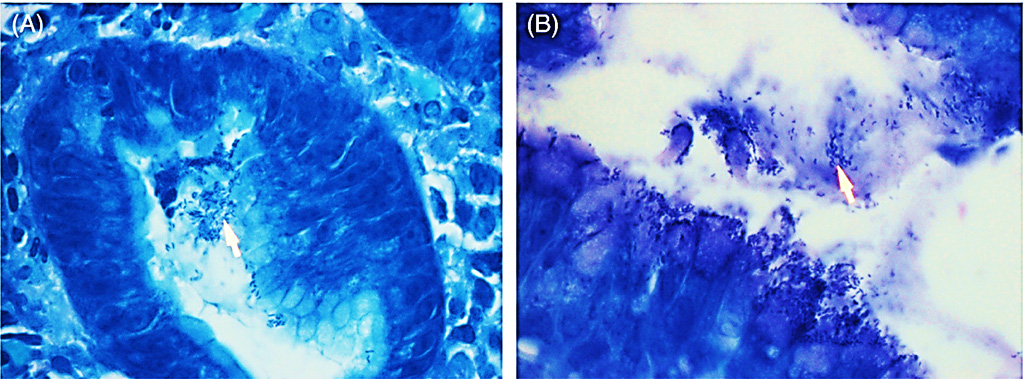Giemsa Stain Outperforms Urease Test for Helicobacter Pylori Diagnosis
By LabMedica International staff writers
Posted on 05 May 2020
More than 50% of the worldwide population is infected by Helicobacter pylori which is harbored in their upper gastrointestinal tract. Despite having chronic gastritis, most people infected by H. pylori are asymptomatic and have no specific clinical signs and symptoms.Posted on 05 May 2020
Giemsa stain and rapid urease test (CLO test) are the most performed tests of H. pylori infection at first‐line clinical examination because of their simplicity and reliability. However, the sensitivity of CLO test is significantly reduced in patients with atrophic gastritis and intestinal metaplasia, and the disadvantages of Giemsa stain are higher cost and time‐consuming.

Image: The positive results of Helicobacter pylori infection by the traditional Giemsa stain. White arrows indicate stained Helicobacter pylori (blue) that are attached to the brush border of the gastric foveolar epithelial cells (Photo courtesy of National Health Research Institutes).
Medical scientists at the Taiwanese National Health Research Institutes (Zhunan, Taiwan) collected and retrieved tissue specimens of 233 patients with gastritis or/and gastric ulcer from diagnostic resection specimens. Tissue specimens of gastric mucosa were separated into three parts for the traditional Giemsa stain, modified Giemsa stain, and CLO test. For the CLO test (Kimberly‐Clark, Irving TX, USA), 2‐3 mm specimen was placed into medium containing urea and examined.
The scientists reported that the modified Giemsa stain was comparable to the traditional one. Statistical analysis indicated that the modified Giemsa stain obtains greater accuracy in H. pylori‐infected patients with gastritis and ulcer than the CLO test (48.1% versus 43.7%). Moreover, considering the prognosis of different symptoms of gastric diseases, the modified Giemsa stain has a more accurate prognosis than combination symptoms. Seventy‐seven of the 173 gastritis patients (44.5%) were diagnosed as positive for H. pylori infection and 96 (55.5%) as negative by the modified Giemsa stain.
The authors concluded that the modified Giemsa stain was more simplified and time‐saving than traditional Giemsa stain, which is comparable to the traditional one and was confirmed to be better than CLO test using 233 H. pylori‐infected patients with gastric disease. In clinical examination, this modified Giemsa stain can be applied to routine examination and provides quick and accurate diagnosis and prognosis to H. pylori‐infected patients with gastric diseases. The study was published in the April, 2020 issue of the Journal of Clinical Laboratory Analysis.
Related Links:
Taiwanese National Health Research Institutes
Kimberly‐Clark




 assay.jpg)








